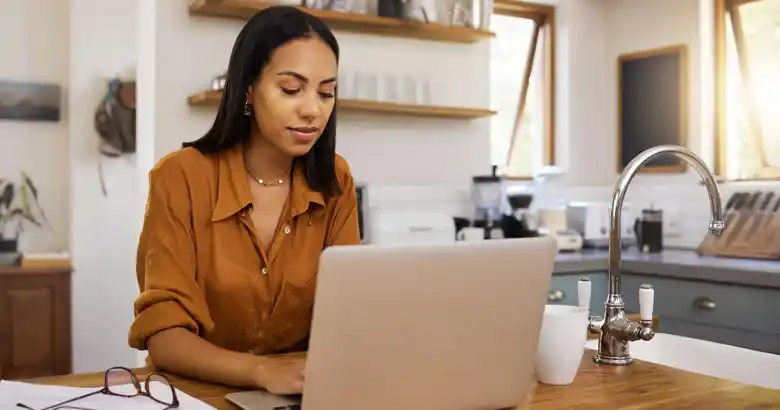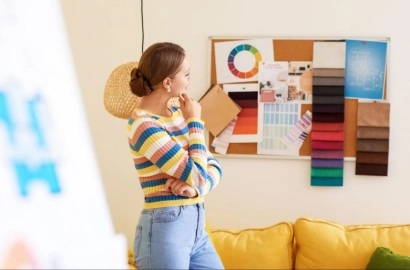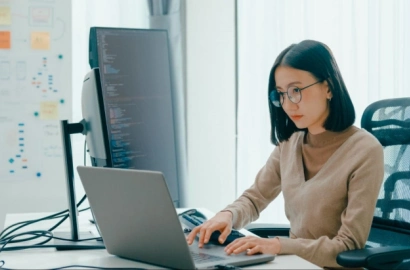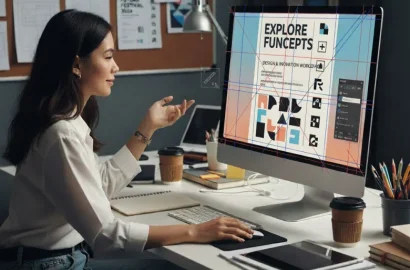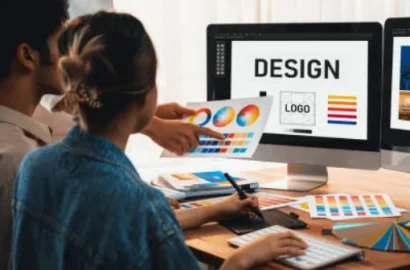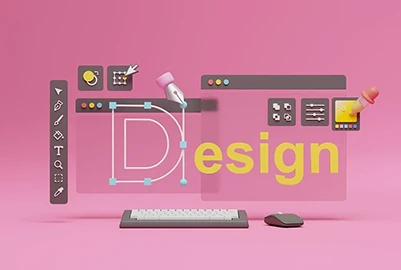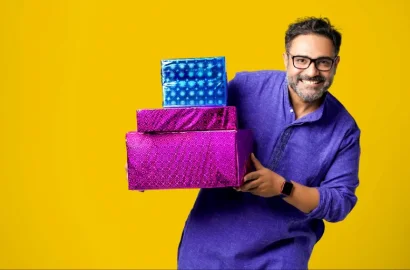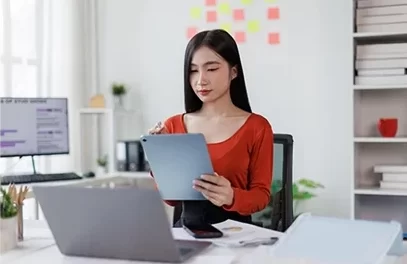Are you preparing for a graphic design job interview? In this guide, we set out the most common questions you’re likely to be asked—and show you how to answer them.
So you’ve landed a graphic design job interview. Congratulations! Now it’s time to research the company in more detail, go through the job description with a fine-tooth comb, and generally prepare to impress the hiring panel.
To help you, we’ve compiled the questions that most commonly come up in graphic design interviews. For each question, we explain what the hiring manager is hoping to find out—and share advice on how to answer.
This compilation will enable you to answer confidently and coherently and ensure that you’re highlighting your most impressive skills and qualities.
Here’s what we’ll cover:
- 1) Questions about you
- 2) Process and performance-related questions
- 3) Questions about your goals and aspirations
- 4) Further tips to help you prepare for your graphic design interview
Ready to ace your interview? Let’s go!
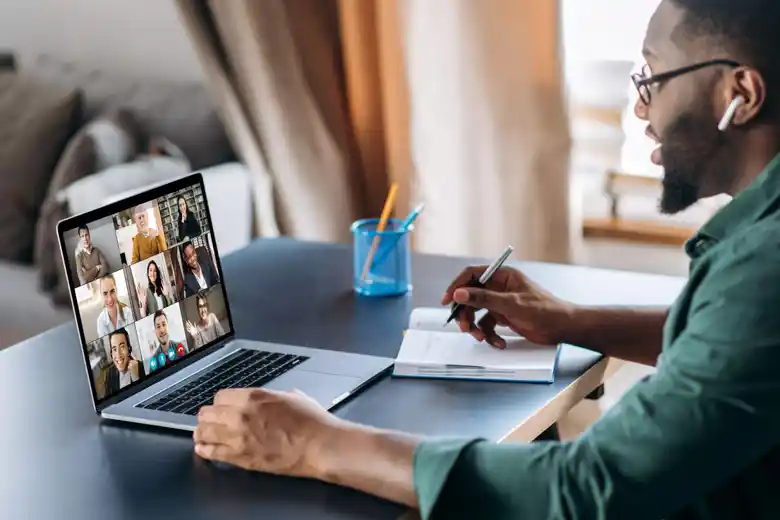
1. Questions about you
Most interviews will start with broader questions to learn more about you and why you applied for the role. Let’s consider some of the most common opening questions and how to answer them.
Tell me about yourself
Why the interviewer asks this question:
The interviewer has already looked through your resumé and LinkedIn profile. Now they want to learn more about the person behind the application.
How to answer:
Talk about your professional and educational background, what skills and achievements set you apart, and what led you to apply for the role.
The key here is to keep your answer as concise and as relevant as possible. The interviewer may not be interested in the fact that you’re an accomplished piano player, but they will certainly want to hear about how you discovered your passion for graphic design while designing flyers as part of a volunteering gig.
Ultimately: What can you share about yourself that shows the hiring manager you’re a great fit for this role?
What attracts you to the role and to our company?
Why the interviewer asks this question:
What they’re really asking is: Why do you want to work here? Did you look closely at our company and at the job description before deciding to apply? Does our product/brand resonate with you in some way?
How to answer:
Share what excites you about both the role and the company, focusing on specifics. For example, if the job description emphasises working with multiple clients, you might say that you’re excited about the variety and challenge of supporting different brands. If the role is for a sports and nutrition brand and you’re a keen fitness enthusiast, explain how the company’s mission and values resonate with you on a personal level.
Be authentic and specific, highlighting what genuinely appeals to you about the role and the company, and why you believe it’s a good match.
Why did you choose a career in graphic design?
Why the interviewer asks this question:
They want to know if you’re truly passionate about graphic design and what led you to the field.
How to answer:
Identify the aspects of graphic design that you genuinely enjoy and talk about how you ended up pursuing it as a career.
Perhaps you’ve been drawing ever since you could hold a pen, and graphic design allows you to explore and express your creativity. Maybe you started off in marketing and discovered your passion for graphic design while creating assets for a social media campaign. It could be that you’re extremely tech-savvy and love pushing the boundaries of digital graphic design. Or, even that you took a graphic design course alongside everything you’re doing.
No matter what story you tell, the goal is to communicate your passion for graphic design and the unique value you bring to the field.
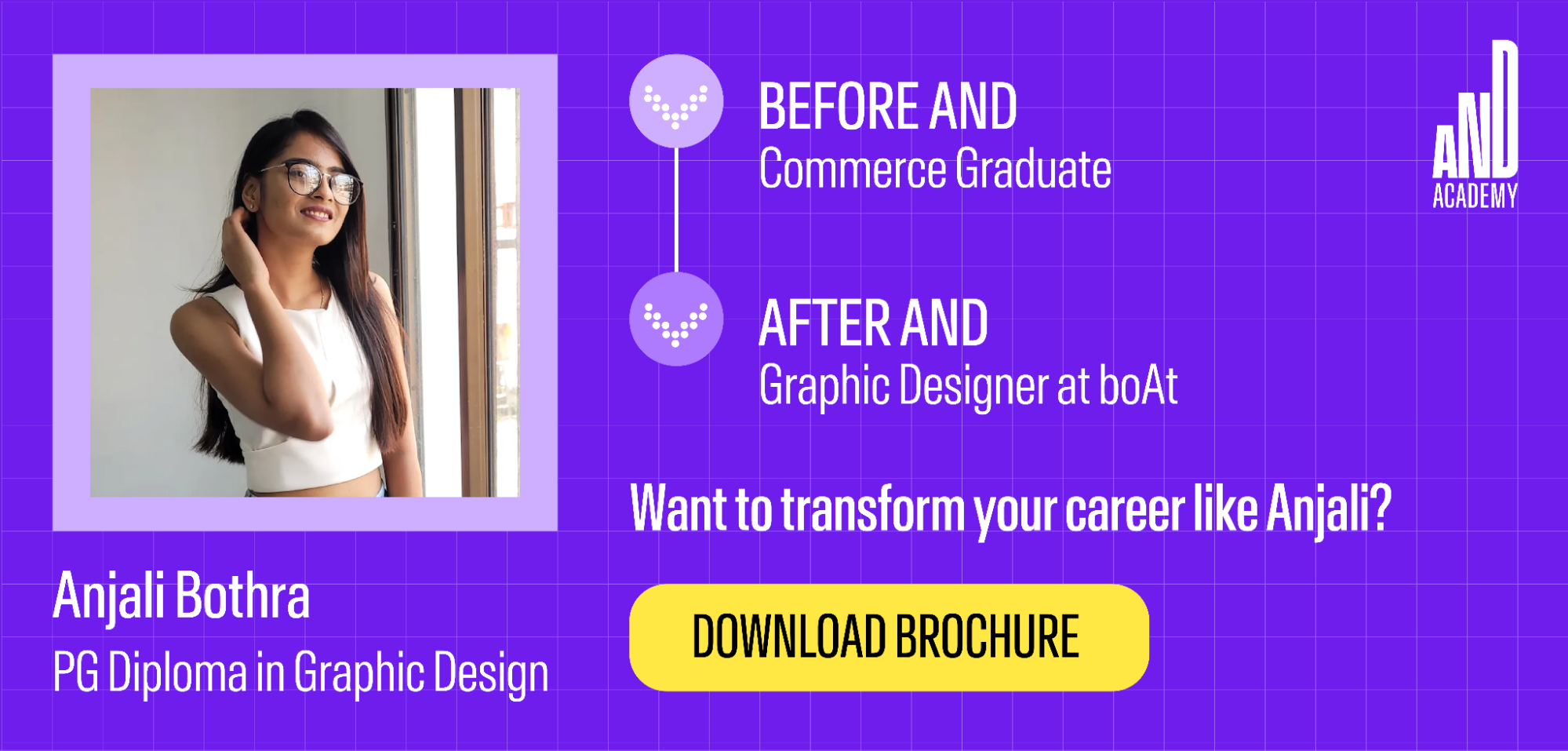
What are your greatest strengths?
Why the interviewer asks this question:
They want to see if your strengths align with the requirements of the role, and what you’ll add to the team.
How to answer:
Talk about what makes you a great graphic designer—and, most importantly, what equips you to excel in this particular role.
Read through the job description and note down the most important skills and qualities for the role. Then, highlight your strengths that most closely match. For example, if the job ad calls for exceptional communication skills and the ability to collaborate with stakeholders from different departments, this is the perfect moment to mention that you’re an excellent communicator.
And, importantly, provide concrete examples and anecdotal evidence to validate your claims.
What are your weaknesses?
Why the interviewer asks this question:
Nobody’s perfect, and the best graphic designers are able to recognise their own weaknesses and take steps to learn, grow, and improve. When asking this question, the interviewer wants to see that you’re self-aware and willing to work on your skills gaps.
How to answer:
Highlight one or two weaknesses, explain how you discovered them, and share concrete actions you’ve taken, or are taking, to improve.
And, while it’s important to be honest, you don’t want to highlight a weakness that’s actually a core skill for the role—so think carefully about what you share.

2. Process and performance-related questions
Now the interviewer wants to learn more about how you work, the processes you follow, and how you approach specific challenges. Here are some of the most common process and performance-related graphic design interview questions.
If you received a brief to design [X, Y, Z], how would you go about it?
Why the interviewer asks this question:
They want to learn about your graphic design process.
How to answer:
Outline the high-level process you follow whenever you’re presented with a new design project. You don’t need to go into every tiny detail here—in fact, it’s worth mentioning that the specifics will usually vary depending on the exact scope of the project.
The goal is to demonstrate that you have a logical, methodical approach to your work and that you recognise the importance of crucial steps such as taking time to understand the project brief, conducting research, and getting feedback early on before designing the final deliverables.
What is your main priority whenever you design something new?
Why the interviewer asks this question:
What they’re really asking is: Do you know what effective graphic design is all about?
How to answer:
You know what graphic design is: a form of visual communication which aims to connect with the target audience and convey a specific message. That’s what you need to demonstrate in your answer: that you clearly understand the purpose of graphic design and how this determines your role as a graphic designer and your priorities.
So what are your main priorities? Understanding the intended message and the target audience, communicating that message through your designs, and creating designs that align with the brand identity.
Tell me about a time when you received some negative feedback. How did you deal with it?
Why the interviewer asks this question:
The ability to give and receive feedback is a must-have skill for graphic designers. With this question, the interviewer is checking to see if you’re open to receiving feedback and whether or not you’re able to learn from it.
How to answer:
Anecdotes work best here. Provide brief context (what were you working on, who were you working with), explain who gave you the feedback, how it was delivered, and what actions you took as a result.
To formulate your answer, think back to the time in question and how you handled it. Did you ask for clarification and do your best to understand the feedback? Did you use it to make improvements to the current project and/or to inform your future work? What did you learn about yourself and why was it useful?
Frame it as a positive learning experience. Demonstrate that you’re always open to receiving constructive feedback and that you do your best to understand and act upon it.
Tell me about a time when you had to give some negative feedback or critique someone else’s work. How did you approach it?
Why the interviewer asks this question:
They want to see how comfortable you are with giving feedback, and that you’re able to do so constructively and effectively.
How to answer:
Again, the interviewer is looking for anecdotal evidence here. Explain who you were working with, why it was necessary to provide negative feedback, and how you went about it.
Ideally, you’ll provide an example that demonstrates your ability to deliver feedback with empathy and respect, and in a way that’s specific, clear, and actionable. It’s also worth emphasising that good feedback focuses on the design/the work itself rather than on the person.
What project in your graphic design portfolio are you most proud of and why?
Why the interviewer asks this question:
They want to learn more about what type of graphic design projects you enjoy working on.
How to answer:
We can assume that you’re proud of all (or most) of the projects in your graphic design portfolio, so pick one that relates as closely as possible to the role you’re interviewing for.
For example, if you’re going for a digital graphic design role, highlight a portfolio project that focuses on digital design. If you’re interviewing for a marketing designer role, choose a project that showcases your experience with designing for marketing campaigns.
Talk the interviewer through your approach to the project, what you enjoyed about it, and why you’re proud of the role you played and how the project turned out.
Take a look at some of our AND learners’ Behance portfolios for some inspiration:
- Bibin S’s – PG Diploma in Graphic Design
- Dushyant Singh – PG Diploma in Graphic Design
- Rushali Sharma – PG Diploma in Graphic Design
Talk me through a graphic design project “fail”. What went wrong and why?
Why the interviewer asks this question:
Not every single project will be a success. When asking this question, the interviewer wants to see that you’re reflective, that you can take accountability when things go wrong, and that you seek to learn from your mistakes. They also want to know how you overcome challenges and handle adversity.
How to answer:
First, provide context for the project. What were you designing, what was the goal, and what was your role? Then outline what went wrong, why you think these challenges arose, and what you did to overcome them. Finish by reflecting on what you could have done better and what learnings you took away from the project.
Where do you go for graphic design inspiration?
Why the interviewer asks this question:
They want to know if you’re passionate about graphic design, tuned in to the latest trends, and that you’re able to think outside the box when it comes to finding inspiration for your work.
How to answer:
Hopefully, this one will come easy to you! Do you have any go-to graphic design blogs? A favourite designer whose work you can’t get enough of? Perhaps you like to find inspiration in art galleries, book stores, or fashion boutiques? There’s no right or wrong answer here—as long as you can share some examples and explain why and how they inspire you, you can’t go wrong.
How do you handle a creative block?
Why the interviewer asks this question:
Creative block can be a big challenge for graphic designers. The interviewer wants to know that you’re able to recognise when you’re experiencing a creative block—and that you’ve got some techniques to deal with it.
How to answer:
This is your chance to demonstrate great self-awareness as a graphic designer. Share some insight into what usually causes your creative block. Are you a perfectionist? Does creative block strike when you’re experiencing creative burnout?
Then explain how you overcome it. Do you take a break? Opt for a change of scenery? Turn to your favourite sources of graphic design inspiration?
This is another graphic design interview question that can be answered with an anecdote. In addition to providing general insight, share a specific example of a time when you experienced a creative block and what you did to move past it.
 3. Questions about your goals and aspirations
3. Questions about your goals and aspirations
The final portion of the interview will usually focus on your goals and aspirations. The interviewer wants to understand what kind of career you hope to carve for yourself and how you’d like to progress in the field.
Let’s explore some of the questions you can expect toward the end of your graphic design interview.
What area of graphic design are you most passionate about? Where do you see yourself thriving, both now and in the future?
Why the interviewer asks this question:
Graphic design is a broad and varied field. The interviewer wants to see that you’re aware of different pathways in the industry and that you’ve thought about where you might excel.
How to answer:
If you’re not already familiar with the many different types of graphic design and the various career paths available to you, read through this post to learn about different graphic design jobs and their corresponding skill sets.
From there, think about the areas you’d be most keen to learn about and potentially grow into. Maybe you’re a digital graphic designer by trade but wouldn’t mind expanding into print one day. Perhaps you’re fully invested in digital design and would love to add special effects and motion graphics to your repertoire.
While it’s important to speak authentically about your goals, you also want to ensure that you convey passion and enthusiasm for the type of role you’re interviewing for. Aim to strike a good balance.
Where do you see yourself 3-5 years from now?
Why the interviewer asks this question:
What they’re really asking is: Do you plan to stick around if we hire you?
How to answer:
Focus your answer on how you can grow and progress within the company. Outline your own career goals and explain why you think this job—and the company—will provide the perfect setting to achieve them.
For example: Maybe you’d like to eventually take on a team leadership role. If you’re interviewing for a mid-level role within a fairly large design team, explain how you’d like to spend the next year or two learning as much as you can from the senior graphic designers while helping to mentor the junior graphic designers on the team.
Relate your career goals to the company and the job you’re applying for, and express a keen interest to learn and grow in the role.
Do you have any questions for me/us?
Why the interviewer asks this question:
Not only is this good practice from the interviewer’s side; it also helps them to gauge whether you’re genuinely interested in the company and the role.
How to answer:
Take this opportunity to learn more about the role and the company culture. Depending on what you’d like to know, consider asking one or two questions from this list:
- How would you describe the company culture?
- What do you enjoy most about working here?
- How do you see this role evolving in the next few years?
- In your opinion, what is the most challenging aspect of this role?
- What do you think are the most important qualities a candidate would need to succeed in this role?
What are your salary expectations?
Why the interviewer asks this question:
They want to see if your salary expectations are aligned with what they’re offering for the role.
How to answer:
Present an exact figure—say, $65,875 rather than $65,000. Studies show that if you ask for a precise number, you’re more likely to get an offer that closely matches.
In terms of coming up with this figure, base your salary expectations on market value, not on your current or previous earnings. Search the average salary for your specific job title and location, consulting multiple sources such as Indeed, Glassdoor, Talent.com, and AmbitionBox .
4. Getting ready for a graphic design job interview: Further tips
Preparing for these common graphic design interview questions is just one step in the process. Ahead of your interview, make sure your graphic design portfolio is up-to-date, ensure that you’re familiar with the most important graphic design tools and what they’re used for, and brush up on fundamental graphic design principles and the latest industry trends.
Last but not least, remember all the unique qualities, skills, and attributes that set you apart and make you a brilliant graphic designer. You’ve landed this job interview for a reason—now go ahead and demonstrate your value with confidence and courage.
Next Steps
Here are some additional resources that might prove useful:
- Watch this session by design veteran and AND’s Academic Head, Prachi Mittal, and our Course Lead, Soumya Tiwari.
- Talk to a course advisor to discuss how you can transform your career with one of our courses.
- Pursue our Graphic Design courses – all courses are taught through live, interactive classes by industry experts, and some even offer a Job Guarantee.
- Take advantage of the scholarship and funding options that come with our courses to overcome any financial hurdle on the path of your career transformation.
Good luck!
Note: All information and/or data from external sources is believed to be accurate as of the date of publication.

